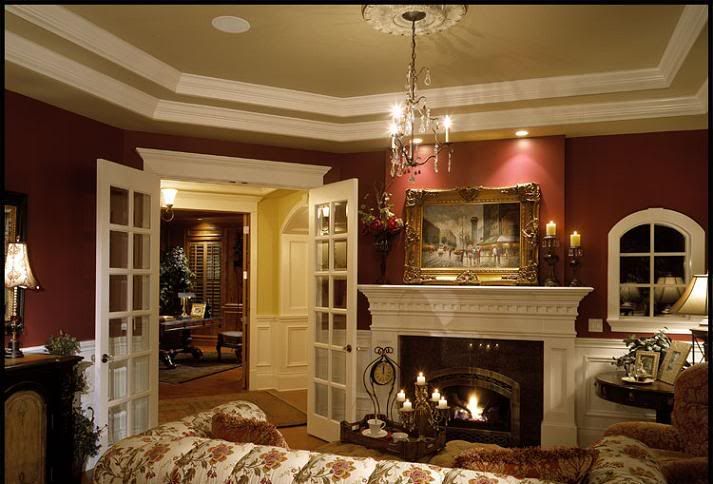Illustration: Sidney Haward wallpaper frieze 1893
Sidney Haward, one of the best known of British textile and wallpaper designers of the period spanning the decades that saw the end of the nineteenth and beginning of the twentieth centuries, is relatively unknown today. Despite the fact that Haward was seen in the same light and at the same design level as other British designers such as Voysey and Mawson, and that he also ran the Haward Design Studio which was to provide Liberty with much of its design work during this period, it seems strange yet interesting how his work seems to have faded away.
The illustrations shown in this article are all wallpaper designs and, apart from the frieze which was produced in 1893, are from the first decade of the twentieth century. Although by no means particularly astounding design-wise, Haward's work is still within the general remit of what can only be called the English Art Nouveau style. In other words an Art Nouveau decorative format that was much more formally based than perhaps was expected to be found as the norm in Europe.
Illustration: Sidney Haward wallpaper design 1908
Haward's pattern work is fairly complex for the period and has some reminiscences and nuances that bind it to the much earlier Gothic styles of Pugin's wallpaper work for example. It is the graphic, but symmetrically standardised format that clearly separates it from anything that might be considered free-flowing and asymmetrical as would be expected with much of the French and Belgian versions of the Art Nouveau.
It is sometimes difficult to separate out the English hesitancy towards the new, their suspicious nature as regards Europe in general, and their natural tendency for the reigning in of any form of decorative excess. These wallpapers, in effect, have tried to find a solution to what many might judge as a difficult assault course of contradictions. As decoration they are by no means subtle and have taken a format so rigidly framed as to appear intransigent and stilted.
Illustration: Sidney Haward wallpaper design 1908
For work that was produced nearer the end of the first decade of the twentieth century, rather than that of the beginning, they appear a little out of synch with the standards of decorative work being produced across Europe, particularly in Germany and Austria. From the days of William Morris and the ascendancy of the English Arts & Crafts movement, English decorative design work seemed to have lost both impetus and direction.
While there was to a certain extent, an interest in England towards the new formats being devised in Europe, the interest tended to be both sporadic and localised. Many were unconvinced that there was any long term gains to be made from the decorative movements in Europe, particularly those that dealt with the future of architecture and design in general. However, it is such a shame that more potential couldn't be identified amongst the English, who were still very much involved with the Arts & Crafts movement, and so therefore much of the groundwork that was laid in Germany for the eventual birth of the Bauhaus, was largely missing in England.
Illustration: Sidney Haward wallpaper design 1907






















No comments:
Post a Comment